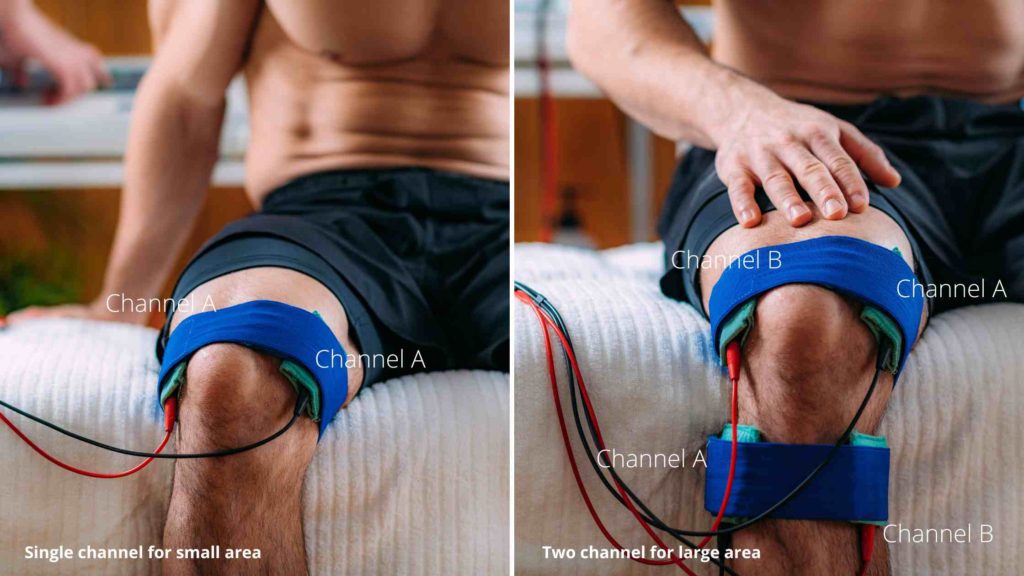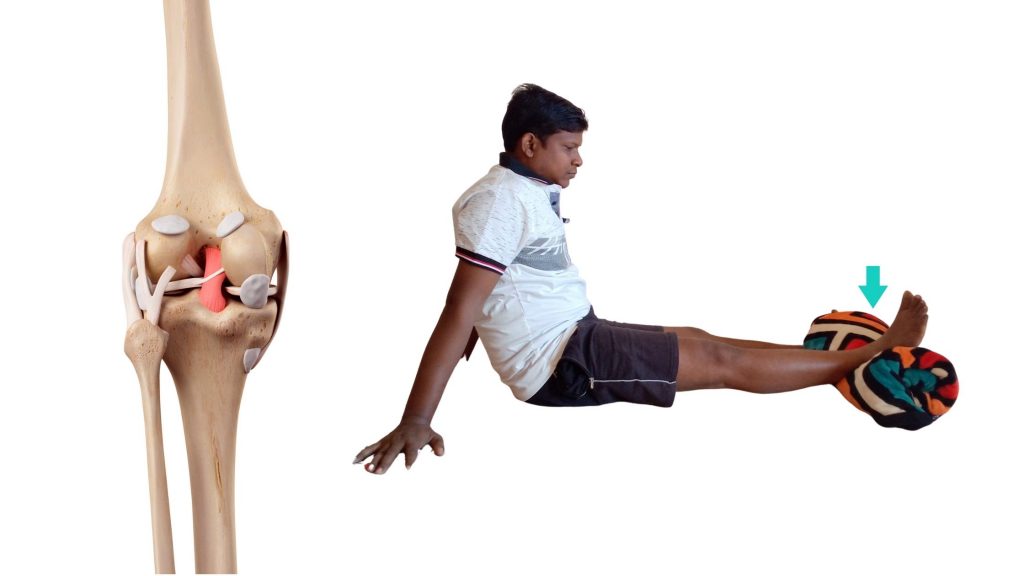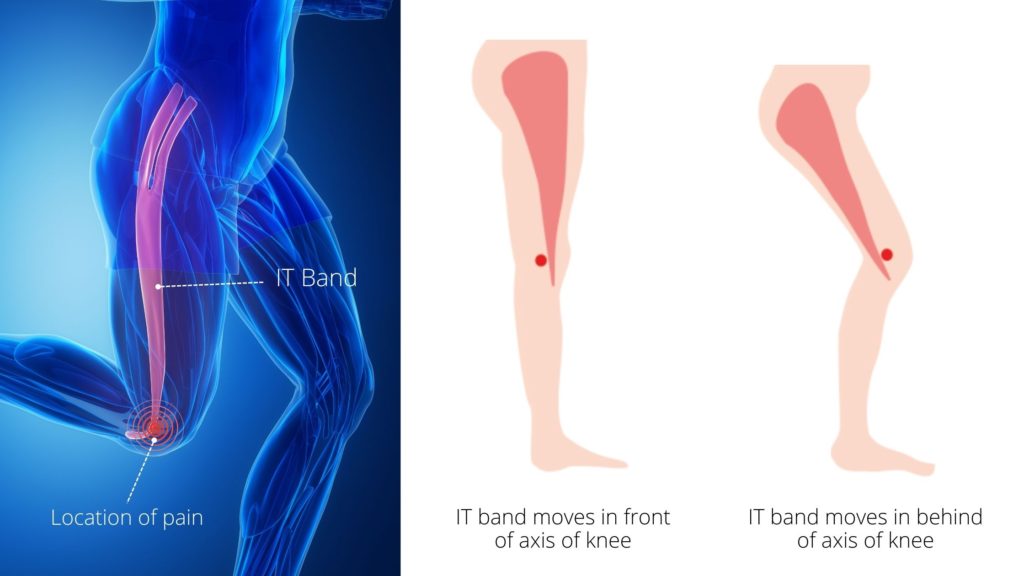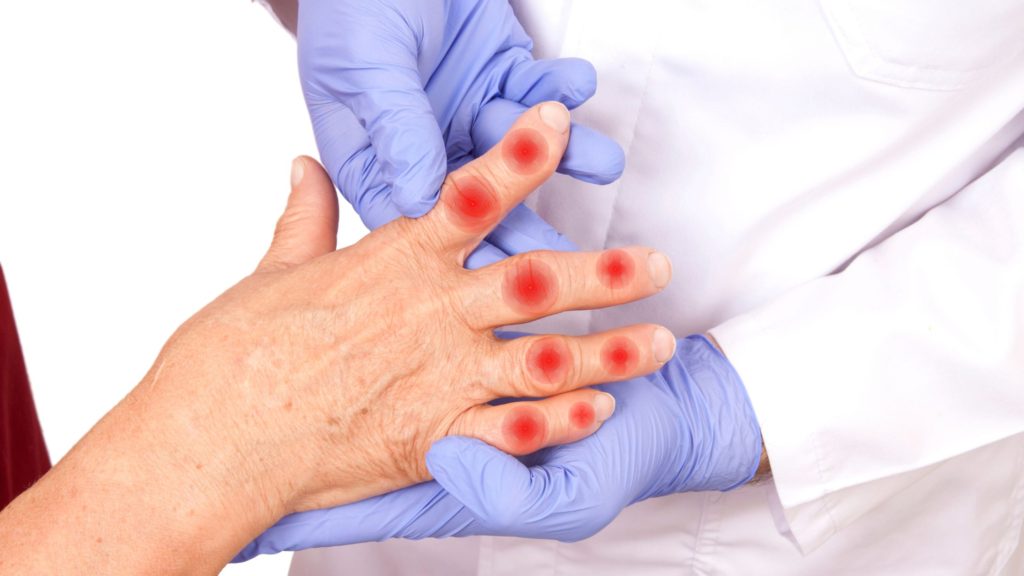Last updated on April 11th, 2025 at 11:43 am
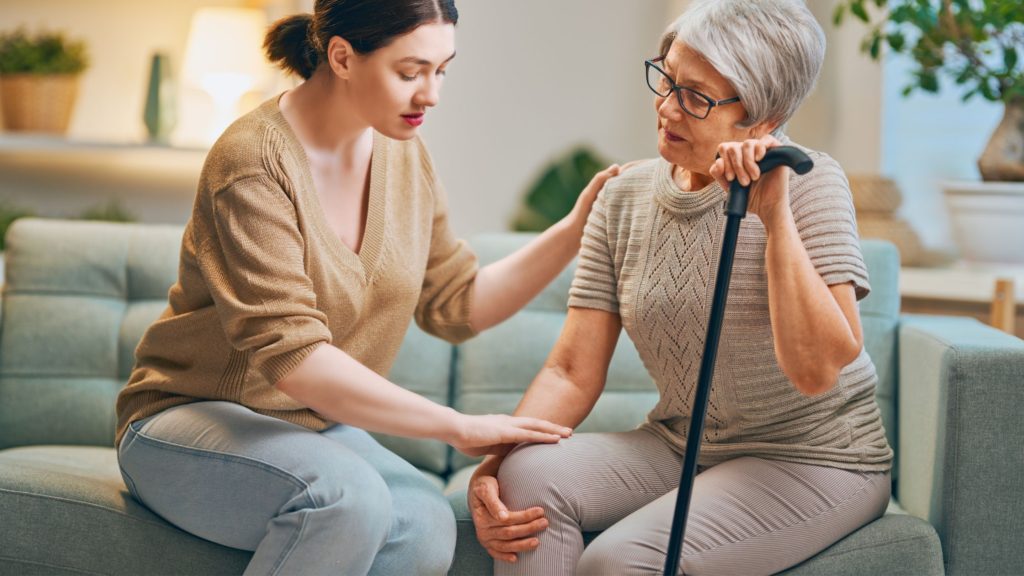
Knee pain due to osteoarthritis is quite common in elderly individuals. A study has shown that over 23% of people over 40 years globally suffer from osteoarthritis knee1. Doctors usually prescribe knee pain exercises, medicines, and sometimes injections to manage this condition. However, it’s critical to take knee pain precautions and prevention in the early stage of OA knee to avoid aggravating the problem further. Sadly, many people are unaware of what precautions to take or what to avoid.
We already covered the exercises for osteoarthritis knee, but this article will focus on precautions one must take if you’re suffering from knee pain.
Why osteoarthritis knee prevention and precaution is important
Presently the focus of the majority of research and management in OA knee has shifted to the prevention and treatment in the early stage of the disease2. To understand why prevention is so critical and what precautions you need to take, you need to understand some basics regarding what happens in our knees in osteoarthritis.
Osteoarthritis occurs when cartilage in joints breaks down and wears away over time, resulting in a rough surface. The knee joint is particularly susceptible to osteoarthritis, as it bears the weight of the body and is subject to repeated stress and impact. So when we walk, the upper and lower rough surfaces rub against each other and due to this, we get terrible knee pain and discomfort.
However, there are many steps you can take to prevent or minimize the risk of developing osteoarthritis in your knees, or to slow its progression if you already have the condition.
- One of the most important things you can do is to maintain a healthy weight. Excess weight puts extra pressure on your knees and can accelerate the degeneration of the cartilage. Eating a balanced diet and engaging in regular exercise can help you achieve and maintain a healthy weight.
- Another important preventive measure is to avoid or minimize activities that put excessive stress on your knees, such as running or jumping. Low-impact exercises like swimming or cycling can help you stay active without putting undue strain on your knees.
- If you have already been diagnosed with osteoarthritis of the knee, there are still many things you can do to manage your symptoms and slow the progression of the disease. Physical therapy, medications, and assistive devices like braces or shoe inserts can all help relieve pain and improve function.
Preventing or managing knee osteoarthritis is important for maintaining your overall health and quality of life. By maintaining a healthy weight, avoiding excessive stress on your knees, and seeking appropriate medical care, you can minimize the impact of this common condition on your daily activities and enjoy a more active, pain-free lifestyle.
4 Knee Pain Precautions for osteoarthritis knee
So, what precautions should you take? We have to avoid such activities where the load on the knees increases. So which are the activities where there is the load on the knees and chances of the knees rubbing against each other increase? These are those activities where we bend the knees.
And if we bend our knees along with the body weight then that is most dangerous. For example, if I squat this is squatting, this is the most dangerous where my body weight is on the knee and the knee is also bending. Avoid such activities where knees are bending. So, which are the daily activities where we bend the knees?
1) Avoid the Indian mode of toilet
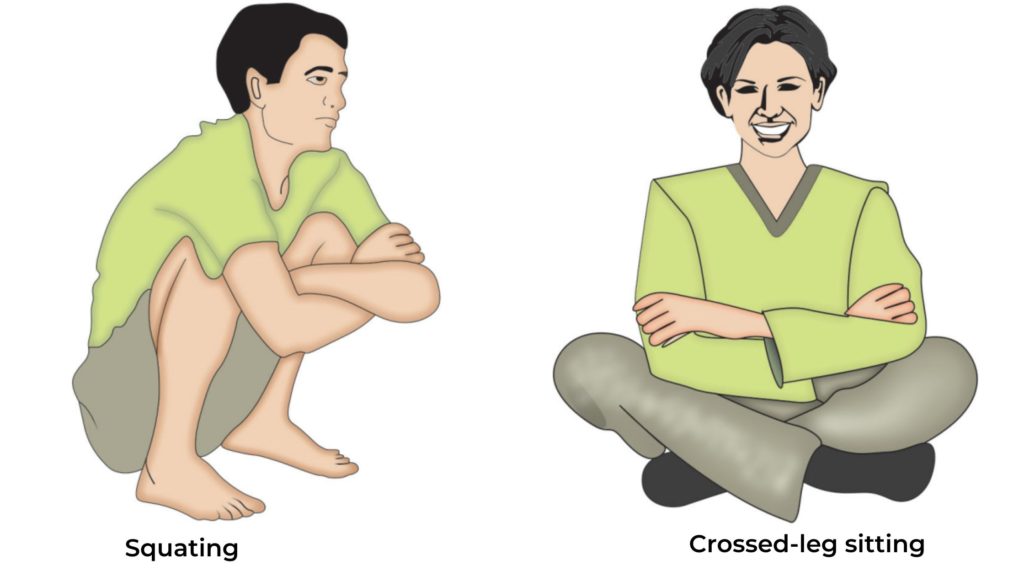
The first and most common mistake one can make is the use of the Indian mode of toilet. For those who are unaware, the Indian mode of toilet requires you to squat, and most Indians have traditional practices of squatting, like when using an Indian toilet. In squatting, the knee goes into deep flexion, which is not good for osteoarthritis.
It would be best to avoid this, and you will also notice that you cannot perform squatting due to pain. If possible, replace the toilet with the Western mode of the toilet or use a foldable commode, which you can purchase at medical stores or online. If you are travelling outside, you can carry it with you and use it if you want to purchase the commode.
2) Avoid crossed-leg sitting as a precaution for knee pain
It’s important to avoid sitting with your legs crossed for extended periods of time. In India, it’s common to sit with crossed legs for daily activities, but this habit can put a lot of pressure on your knees. When you sit with crossed legs, your knees are bent completely, which creates stress on the knee joint surface and patellofemoral joint.
To sit with crossed legs, you first need to squat and then sit down, which puts even more stress on your knee joint when you get up. Therefore, it’s best to avoid sitting with your legs crossed.
3) Avoid stair climbing
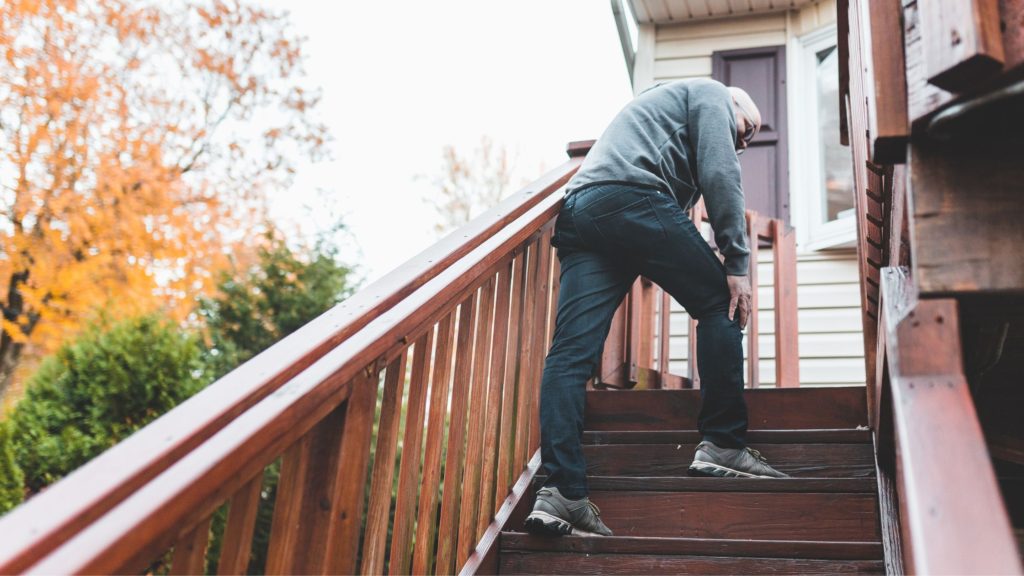
One of the important precautions to take to avoid knee pain is to refrain from climbing stairs. If you have to climb stairs, try to minimize it as much as possible. When we climb stairs, our knees bend and our body weight is put on them.
Furthermore, when we climb stairs, our entire body weight is supported by one leg, which can cause additional strain. In order to reduce the risk of knee pain, it is recommended to avoid climbing stairs whenever possible.
4) Use knee cap during walking for knee pain precautions
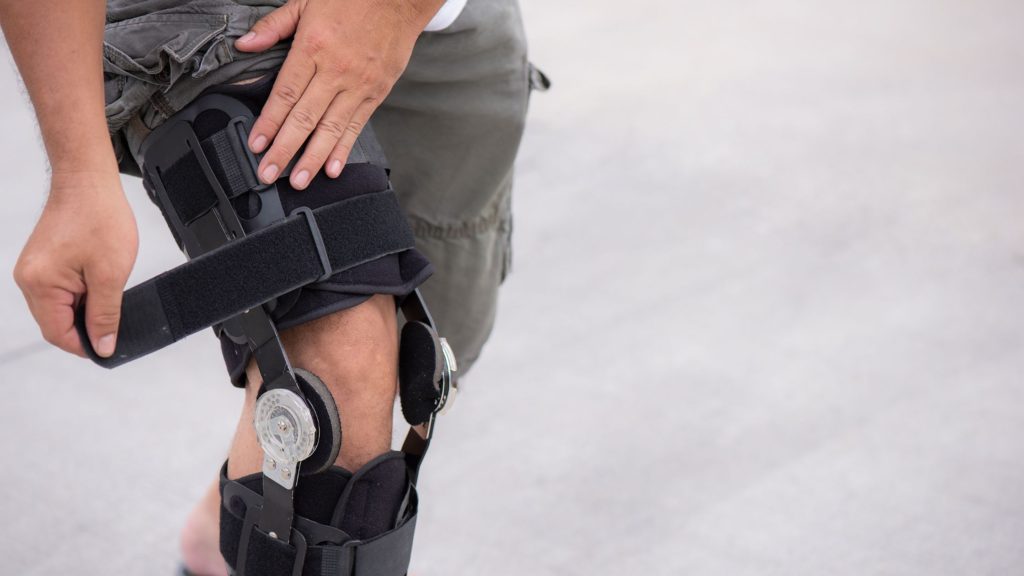
Many people have a habit of a morning walk, especially those who are obese, diabetic, or overweight need to go for a morning walk despite having knee arthritis. They might have experienced increased pain after walking and may question themselves: how to reduce knee pain while walking?
In such cases, it is highly recommended to wear kneecaps when going outside for a walk. Knee caps or brace provide protection and support to the knee joint thus reducing stress on the affected area when walking. This helps to reduce pain and improve mobility.
Another important function of knee braces is they help prevent the knee from bending too far, which is crucial, as we discussed at the start of this article, to reduce the risk of further damage to the joint.
Other useful knee pain tips
Along with this, you should avoid a few exercises that increase the risk of joint surface damage. I have already made a detailed article on what exercises to avoid in knee pain. Please refer to and avoid those exercises strictly. If you follow all of this, your knee health will be maintained and you can turn your life into a quality life and lead a good life.
If you take care of these things, your knee pain will not aggravate and prevent it from reaching a level of surgery. You must try to avoid or delay knee replacement surgery as much as possible, avoid it at an early age so that you can opt for it at a later age.
Keep Reading: 9 Best Knee Rheumatoid Arthritis Exercises For Stiffness, Pain
The author is a physiotherapist who has been practising for the last 17 years. He holds a Bachelor's in Physiotherapy (BPT) from SVNIRTAR (Swami Vivekananda National Institute of Rehabilitation and Research), one of the prestigious physiotherapy schools in India.
Whatever he learns dealing with his patient, he shares it with the world through blogs and e-books. He also owns a YouTube channel, "Sunit Physiotherapist" with over 8 lakh active subscribers. Here, he shares everything he gets to learn serving the patient.
